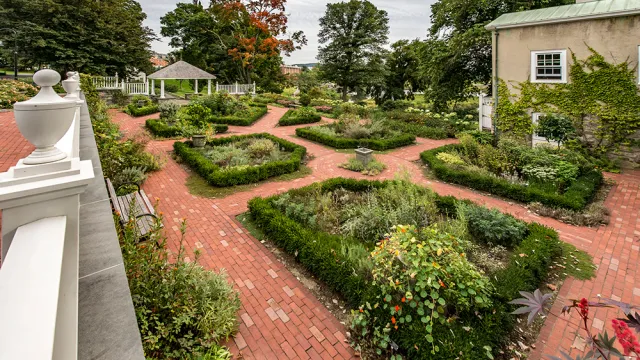Campaign Impact: Bricks-and-Mortar Projects Keep Pace With Campus Needs
Supporting Smith

Published May 2, 2017
A prospective student can be as discerning as any house hunter when it comes to selecting the campus where she’ll spend the next four years.
“Students quickly decide if they like the campus,” says Peter Gagnon, Smith’s capital construction director. “It’s curb appeal. Keeping the campus clean, up to date and looking like you put a lot of effort into it is important.”
Small wonder, then, that the campus devotes significant resources to its buildings, grounds and facilities. Many bricks-and-mortar projects—large and small—were begun, completed or planned during the Women for the World campaign and affect the full range of the student experience.
The monumental and complex Ford Hall, completed in 2010, has come to symbolize Smith’s commitment to training women in science and engineering. Smaller projects, like a renovated dance studio (2017) with a million-dollar view of Paradise Pond, can have the same effect on an aspiring dancer. Aesthetic projects, like refurbishing the iconic Grécourt Gates and college entrances or re-creating a public garden—the Happy Chace ’28 Garden (2016)—outside the President’s House, add to the many reasons students fall in love with the campus.

The new Happy Chace ’28 Garden outside the President’s House is among a number of donor-supported campus projects.
Once enrolled, students have high expectations for Smith facilities. Engineering and neuroscience students expect the technology-enabled classrooms and sophisticated laboratories that they find in Ford Hall or the fully-renovated Burton and Sabin-Reed halls (2011). Field hockey and lacrosse players expect to be able to play year-round on a turf field (2010) with lights. Parents expect a modern medical facility—the Schacht Center for Health and Wellness (2015)—to be available for their students.
Smith prides itself on ensuring that student residences have a vibrant house community. So when Cutter-Ziskind received a top-to-turf renovation (2013), the plans included large kitchenettes where students could gather and cook. “It was a big improvement in community,” Gagnon says.
Elsewhere, the time-worn Friedman apartments got a fresh start with the new Friedman Complex (2016), 20 four-person apartments in five town-home-style buildings.
To encourage students to travel 11 miles to visit the 240-acre Ada and Archibald MacLeish Field Station in Whately, Mass., Smith constructed the Bechtel Environmental Classroom (2012). It also sets the tone for environmental mindfulness as it operates on net-zero energy, provides shelter for hikers, space for science research and a venue for poetry, dance and writing. Student visits to the field station have gone from 300 a year to nearly 2,000.
“We were really trying to create a field station for everyone at Smith and not just the scientists,” says field station manager Reid Bertone-Johnson, a lecturer in landscape studies. “The building serves us well as a gateway to the field station.”
Major gifts can lead to new buildings, but smaller gifts hold significant meaning, too. In athletics, a donor funded a much-needed tent for shelter during cross-country meets. And the crew team will have a fully-outfitted boathouse on the Connecticut River.
The biggest capital project on the horizon is the Neilson Library renovation. But it’s not the only one. By the time Neilson reopens in 2020, Smith will have renovated Washburn House and the Alumnae House. And over on Paradise Pond, dancers will be pirouetting in the Sharonjean Moser Leeds ’67 Dance Studio and taking in that million-dollar view.
Smith's Schacht Center for Health and Wellness opened in 2015, one of a number of bricks-and-mortar projects supported by the Women for the World campaign.